Seedless pomegranate appeared on the market relatively recently, but has already gained great popularity. Its grains have a sweet taste, and it is very convenient to eat them. The fact is that the concept of “seedless” is conditional. Of course, they are, only soft and almost transparent, so they do not interfere with enjoying the fruit.
Material Content:
Does pomegranate happen
Are there pitted grenades? Many believe this with difficulty. After all, people have been using pomegranate fruits for many centuries, since antiquity, and over the centuries they have changed little.
The plant is grown in warm latitudes almost all over the world, including in the neighborhood with Russia. Wild pomegranates can be found in the countries of Central Asia, and plantations of cultivated varieties, in addition to the Central Asian states, are also in Transcaucasia.
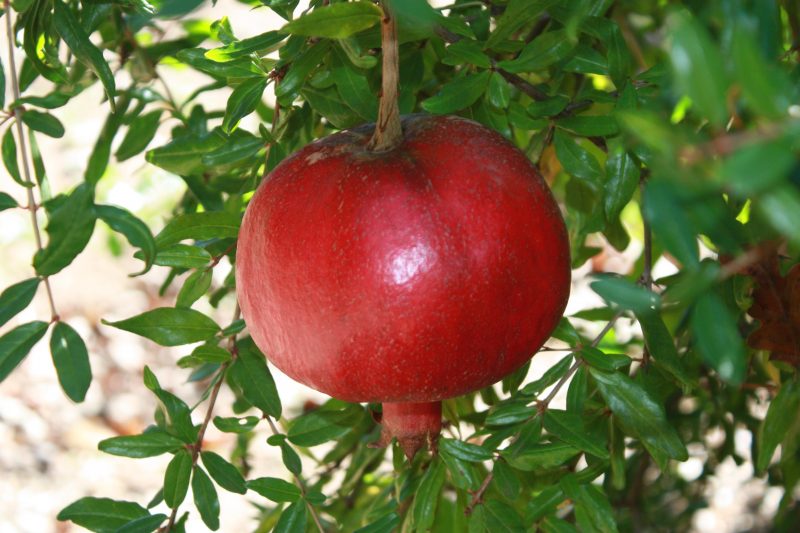
In recent years, fruits have appeared that have a different color - yellow, white and even brown. But a genuine “revolution” in breeding occurred when American scientists introduced a new variety - with transparent soft bones that are almost not felt during meals. Of course, gardeners from other countries also tried to acclimatize an amazing novelty.
For this, breeders crossed seedless pomegranates with those hybrids that are successfully grown in a particular area. So the pomegranate without seeds appeared several varieties.
The composition and calorie content of pomegranate seedless
Doctors often prescribe pomegranates and drink their juice to people with anemia who have low hemoglobin. Therefore, in the view of people, grains should be saturated red - like blood.Seedless pomegranate seeds are usually lighter and more transparent. But at the same time, they include the whole complex of vitamins and minerals, which contain ordinary pomegranates.
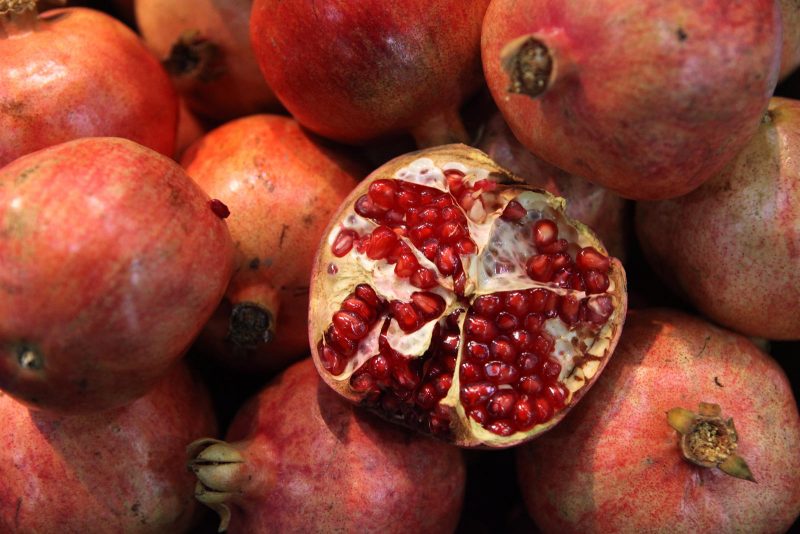
We are talking about vitamins B5, C, A, E and microelements such as potassium and calcium, iodine and silicon, iron, copper and manganese. In addition, grains contain acids necessary for humans, tannins and antioxidants. Beneficial substances are also found in the bones themselves.
If we talk about calories, in seedless pomegranate it is lower than in ordinary. For comparison, on average, 100 g of pomegranate contains 60 kcal, and in boneless pomegranate - only 50.
Doctors have long recognized pomegranate as a dietary product. Providing the body with the necessary substances, it not only does not cause the deposition of fats, but, on the contrary, helps their quickest breakdown and excretion.
Variety and varieties
Since seedless pomegranate is still rare, there are not so many varieties of it. Without exception, all the fruits are very juicy, they are pleasant to eat for both adults and children. In addition, it is easy to get juice from them.

In Peru, most often bred seedless pomegranate varieties "Vandeful". Its fruits are of medium size, weighing up to 300 g, the yield is quite low: 14 - 15 kg per tree. "Vandefula" is preferred in Israel and Asia.
But in Spain, another variety “Mollar de Elche” is most popular. It is more harvestable and its fruits are large (up to 800 g). This variety is also characterized by a thin peel of the fruit, and the grains under it are very sweet.
What does a grenade look like?
By external signs, it is almost impossible to distinguish pitted pomegranate from ordinary. Is that the peel of the first may have a lighter shade. Moreover, taking such a fruit in hand, it is easy to notice that his skin is very thin. Therefore, it is necessary to transport the harvest of such pomegranates carefully so that the fruits do not crack.

After removing the peel from the pomegranate, grains of red or burgundy color are found under it. They are a real delicacy - sweet, juicy, and the bones in the mouth are not felt. Varieties of such pomegranate grown in Europe are quite hardened and tolerate winter well, and in summer they give a plentiful harvest.
It is interesting:persimmon benefit
What are the benefits of seedless varieties of pomegranate
The benefits of seedless pomegranate are great. It contains a large amount of vitamins, and also its grains and juice include people who want to lose weight in various diets.
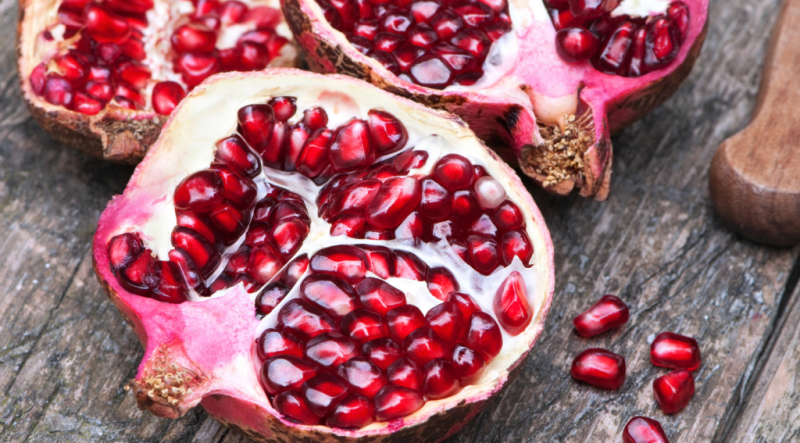
Pomegranate is added to sedative preparations (peel and septum are used for this purpose), and pomegranate peels are an excellent remedy for diarrhea. Pomegranate helps with diseases of the thyroid gland, asthma, hypotension, low immunity, and it also helps to raise hemoglobin.
In addition, pomegranate fruits are convenient to use in cooking. Grains can be added to various salads, and juice can be added to sauces, drinks and desserts.
Many children do not like to eat pomegranates because of the sour taste and hard bones. In this case, seedless fruits have a clear advantage - the child with pleasure “pops” such grains in his mouth and receives with it the substances necessary for the body.
How to clean
It depends on whether you want to get slices or just free the grains from the peel.
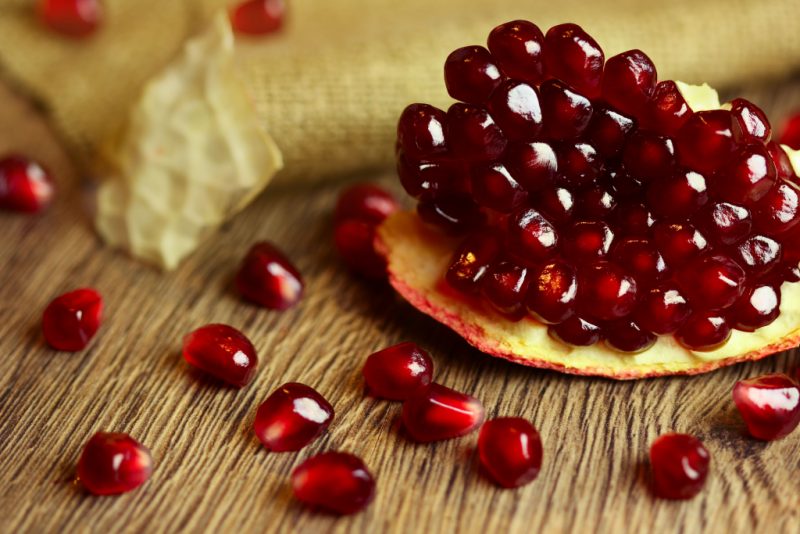
In order to cut the pomegranate into slices, you need:
- With a sharp knife, cut off the upper part of the fetus, being careful not to touch the grain.
- Then, incisions are made in white stripes. And again, carefully so as not to empty the juice.
- The incised part should be pulled over - it will move away from the fruit along with the grains. The remaining slices are separated in the same way.
To get the grains, the “cap” is cut off from the fruit, and then 4 cuts are made crosswise along the fruit. After that, they press the middle of the grenade with your hands and divide it into parts. The grains on each of them shake out in a bowl.
People's advice:horse chestnut: medicinal properties and contraindications
Possible harm from use
Although seedless pomegranate grains have a pronounced sweet taste, there is enough acid in them. In some cases, it can irritate the mucous membranes of the digestive tract, so pomegranate juice is usually drunk in diluted form, and only healthy people eat pomegranate on an empty stomach.
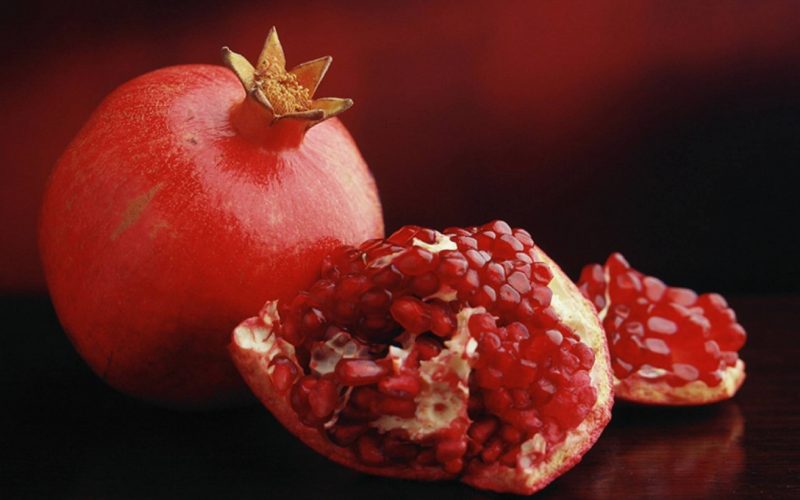
It is not recommended to use pomegranate for those who:
- Pancreatitis in the acute stage.
- Gastritis with high acidity.
- Stomach ulcer.
- Ulcerative colitis.
- Inflammatory diseases of the oral cavity.
- Hypersensitivity of tooth enamel.
- Allergy.
- Violation of the motor function of the intestine, a tendency to constipation.
For children under 12 months of age, pomegranate and pomegranate juice are also not recommended.
Skeptics can see that pitted grenades happen and are gradually gaining more and more popularity. Therefore, quite successful attempts are made to acclimatize this species in Russia. And it is likely that in a few years we will completely forget about the "uncomfortable" varieties with hard seeds.












